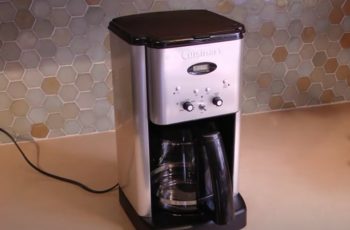How to Make Coffee in a Commercial Coffee Maker?
Coffee plays a vital role in our everyday lives. Having a cup of coffee helps us leave behind all our concerns and savor the moment. For some, the desire to continuously consume it stems from the inability to function without holding a cup of coffee.
Coffee shops are part of almost every street. They give you a lot of options to choose from. But, nobody wants to run towards a coffee café in the morning after getting up from a good sleep.
That is when coffee makers became part of our house. Now every house owns a coffee maker, either a single-server or a 12-cup, 14 cups for the entire family.
Before the personal coffee makers, commercial coffee makers were ruling the coffee-making industry. Still, they are part of many coffee cafes which are high in demand.
Commercial Coffee Makers:
Commercial coffee makers are an essential appliance that decreases the time to make a coffee. Therefore, it is very beneficial, especially for a coffee shop, convenience store, doughnut shop, employees of a business, or attendees of an event like a meeting, s convention, or a Sunday school.
The advantage of a commercial coffee maker is that it can brew one or more than one pot of coffee simultaneously. Also, it has many warming plates to satisfy the need of many users in a busy store.
These commercial coffee makers are not at all difficult to operate. Do not get tensed after looking at a lot of buttons and functions. It is just a matter of time that you can learn to operate one.
How to Make Coffee in a Commercial Coffee Maker?
Step 1-Fill Water in the Water Tank:
The water reservoir holds the water, and it should never be filled above the fill line. In addition, it is recommended to use cold and purified water to prevent any mineral buildup and limescale.
Step 2-Add Coffee Grounds to the Filter Basket:
Add a new coffee filter in by removing the filter basket from the machine. Now take 1 or 2 tablespoons of fresh coffee grounds to the filter for every 6 ounces of water. To distribute the ground, gently shake the basket from side to side.
Step 3-Replace the Filter Basket and Carafe:
Put the filter basket back in the coffee maker and a clean carafe underneath the filter in its place on the warming plate. Then, turn on the coffee machine and wait for about 5 minutes for the coffee to brew.
Note: Turn on the warmer, too, if the coffee machine has one.
Your coffee is ready in just 5 minutes!
How to Make Espresso in a Commercial Coffee Maker?
Fill Water in the Water Reservoir:
- Pour water in the water reservoir up to the top fill line. Be sure to use only cold and filtered water, which is neither too soft nor too hard. Otherwise, you will end up having mineral buildups in the coffee machine, which will eventually alter the espresso taste.
Heat up the Coffee Machine:
- Plug the machine in and turn it on. Then, wait for the machine to heat up. It will take up to 15 to 45 minutes for your coffee machine to warm up properly, as it depends on the size of the machine.
Note: The warm-up will give the water in the boiler to heat up and build pressure. It is essential to force hot water through the coffee grounds.
Grind the Fresh Coffee Beans:
- Grind fresh coffee beans for each espresso to enjoy good coffee. While waiting for a machine to warm, you can utilize the time by grinding the fresh coffee beans. It is suggested to use a burr grinder rather than a blade one to ensure that all the coffee grounds are the same size. Don’t buy pre-ground coffee as it goes stale quickly.
Add 18 to 21 g of Grounds to the Port Filter and tamp the Grounds Down:
- Tamper is a flat metal disk with a rubber hand. Use it to compact the coffee grounds in the port filter. To ensure that the basket fills evenly, rotate the portafilter as it fills from the grinder chute. When the portafilter is filled, use a clean forefinger to level the grounds in it. Apply about 30 pounds equals 14kg of pressure.
Note: Practice it on the bathroom scale by pressing it until it reaches 30 pounds, which equals 14 kg. It will give you a feel for how much pressure to apply.
Porta filters are small metal dishes with long handles. They can be attached to the group head. The filter screen in it is known as the basket.
Lock the Port Filter into the Group Head and Press the Button to Brew:
- Some commercial coffee makers have a pre-infusion; it is necessary to complete that stage first. While in other coffee makers, press the appropriate button and allow the pressure to force hot water through the coffee beans until your coffee cup is filled with espresso.
Note: The group head is made up of gravity-fed nozzles. These nozzles are connected to a pipe that runs through the boiler underneath the machine’s top section.
Add Milk, if Desired:
- Pour the desired amount of milk into the pitcher. Turn on the steamer. Hold the steam tip just under the surface of the milk for few seconds. When the temperature is 140 degrees Fahrenheit or 60 degrees Celsius, then the milk is ready. Pour the milk in your espresso, and Voila!
Bottom line
Commercial coffee makers can look like complicated devices with all the buttons and functions. However, in reality, they are easy to use and simple. It does not matter you own a drip coffee maker or a semi-automatic espresso machine. Once you know all the parts, it is only a job to follow a simple process to enjoy a fresh and perfect coffee cup anytime you want.



